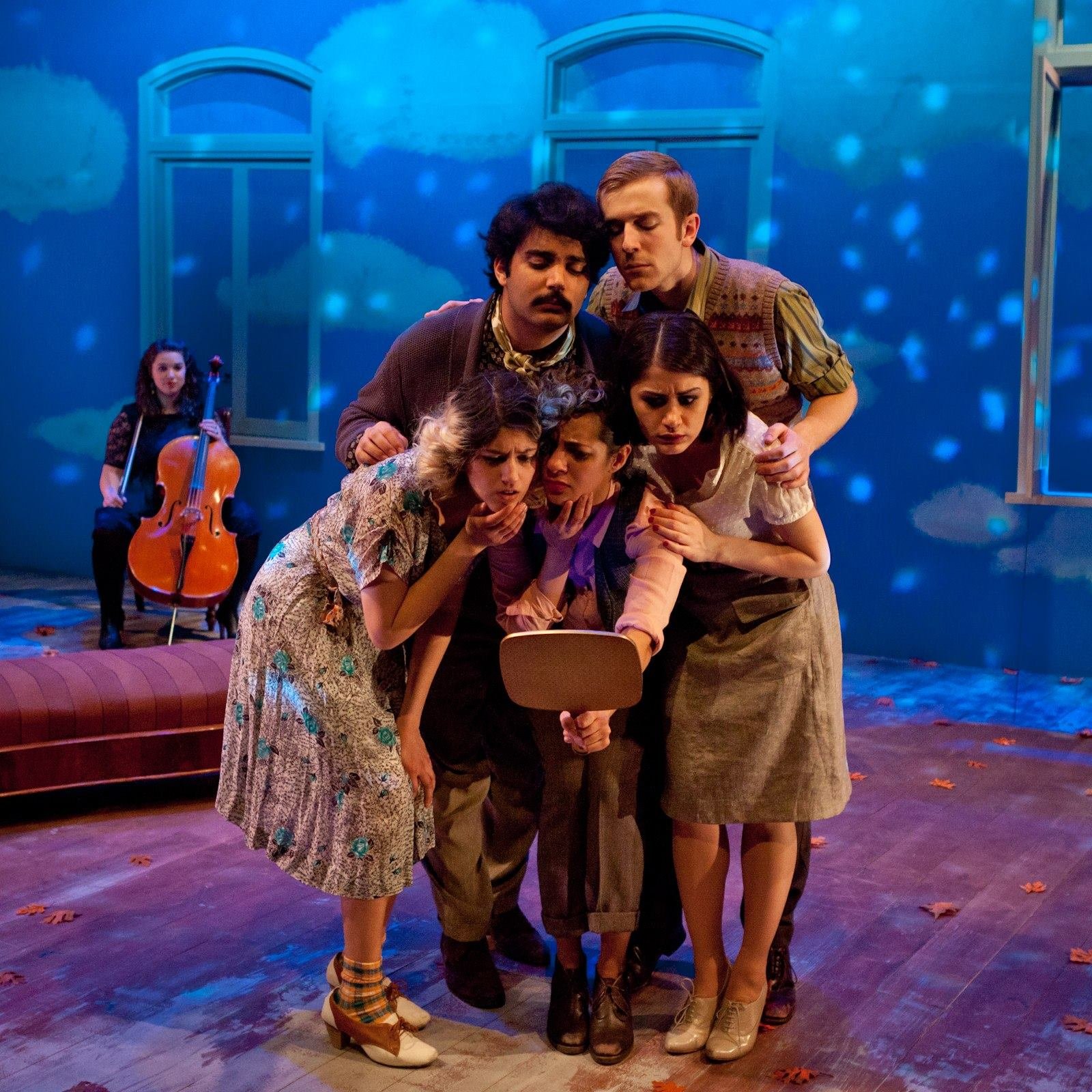Melancholy Play (Sarah Ruhl)
I’m sorry to say it like this, but as a rule I don’t like Sarah Ruhl. I am far too traditional to wholeheartedly follow her notion of poetic truth. Historically the plays of hers that I like are the ones where the abstract nature that typifies her writing is cordoned off from the main action of the show (Clean House, The Oldest Boy) but still has enough there to show what it is she does.
So when I was contacted to do a lighting design for one of her shows I hadn’t yet read in full (and not at all since the revisions) I thought I knew what to expect: a show I wouldn’t like, but could have fun with, that had interesting characters that go off the rails for little rational reason.
It took me awhile to realize I was wrong.
As the Audience
My first read gave me what I expected: weirdness homogeneously spread throughout in a way I didn’t connect with. Tilly, a bank teller, is overcome by Melancholy, which makes her irresistible to those around her. We see her deny or indulge in various love affairs, and how she affects the people we meet, until she becomes happy.
This happiness begins to eat at her mystique, repelling many of the people who once adored her, and sending them into their own fits of melancholy. Eventually as Ruhl digs herself into her Ruhl pit, characters go so deep into melancholy that they become almonds, but eventually they’re almonds together and they end happily isolated with each other.
My first read, I got what I expected, a show with a few laughs, a few ideas, but didn’t inspire much of anything in me. When I saw what the directors (Ruth McCleskey and Katherine Rinaldi) and cast did to bring it to life though, I saw it in a whole new light.
Suddenly it was a hysterical soap-opera style comedy with lots of deep sighing out of windows and goofy tableaus. Everyone leaned hard into the melodrama present in the script and came out the other side into a silly, abstract, and thoroughly non-realistic show.
As a Designer
Unlike yesterday’s breakdown at how to manufacture thousands of props, this design section is a joy to imagine people reading: because while it is a design that I’ve already done, it is one that was interesting to play with.
What I wouldn’t give for some texture like this.
The space in which I did the lighting design is limited, there is only so much I can make the stock do, primarily very shallow color mixing on LEDs.
Even so I had a lot of fun, this is the second lighting design I’ve done that is explicitly non-realistic: whereas for most jobs I start with how things might usually look in real life then bend that to make things look as good as possible. This design was more like approaching dance: the show has big emotions that the characters flit among and the lighting design follows those emotions.
Big emotions mean lots of saturation; melancholy is cyan; depression is dim; happiness is white, bright, and flat. When characters talk about the ocean the lights start to come in and out like the tide. As characters mix and mingle their key colors mix too. I thank the directors for letting me make a lot of odd choices, and I hope it enhances what they were going for.
As a Writer
As I said, I have a complicated relationship with Sarah Ruhl. The more I read of hers the more I find things to respect, if not necessarily like, and that’s what I continue to walk away from the script of Melancholy Play with: respect for the boldness to abandon realism, even as it makes my own writerly senses fray.
Her characters here are unabashedly extreme, and have no problem announcing themselves to whomever is around which pushes the play along and begets similarly extreme reactions from the other characters.
I don’t know that I’m ready to find the beauty and the value in a Sarah Ruhl world, but I am getting closer with each play.

